Tis the season, and for me, that means the season to get out and photograph some holiday light displays. Almost any camera will do for the basic photos, but if you want to make something special, then read on for a few advanced tips.
While you don’t HAVE to use a tripod, doing so will let you make pictures others can’t. And, you get the added benefit of being able to use lower ISOs, which will mean better quality pictures. While automatic exposure modes can work well for many normal situations, night photography isn’t one of them. You’ll be better off in Manual mode, taking advantage of the LCD on the back of your camera (or better yet the Highlight and Histogram displays). A couple of minutes experimenting with settings is all you’ll need to find a good exposure (and you can always use the settings I list, below, with the photos, as a starting point).
There should be enough light for the camera’s autofocus system to properly focus, as long as you put the active sensor on one of the brighter lights. Once it’s found focus, however, turn off the autofocus. With most cameras you can do this with a switch on the lens. That way the camera won’t be trying to focus every time you take a picture.
In addition to a tripod, a fast lens will let you take advantage of some techniques otherwise unavailable. And finally, breaking the rules – like intentionally moving the lens and/or camera – can also result in unique pictures. Check out the photos below, and the explanations of how they were made, then get out there and make your own!
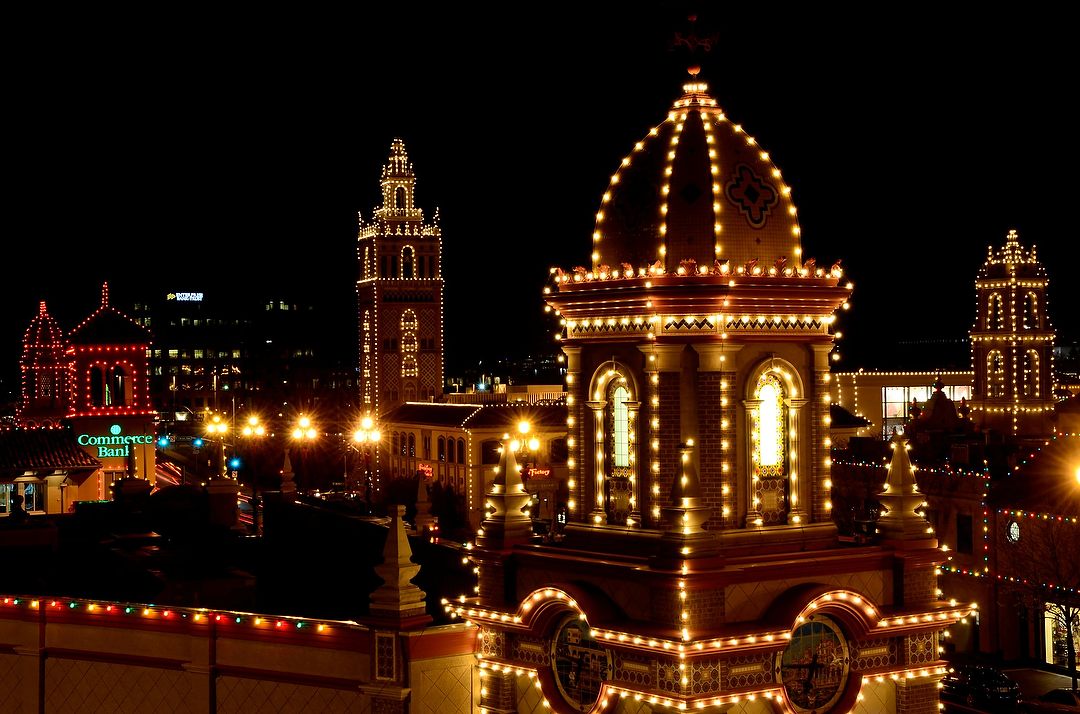
I’m always looking for a different angle when shooting pictures, and holiday lights are no exception. In this case, with a downtown area, parking garages are an easy way to get an elevated perspective on the scene. Nikon D7000, Manual exposure, Incandescent white balance, ISO 100, 6-seconds at f/16, Nikkor 16-85mm lens at 40mm.
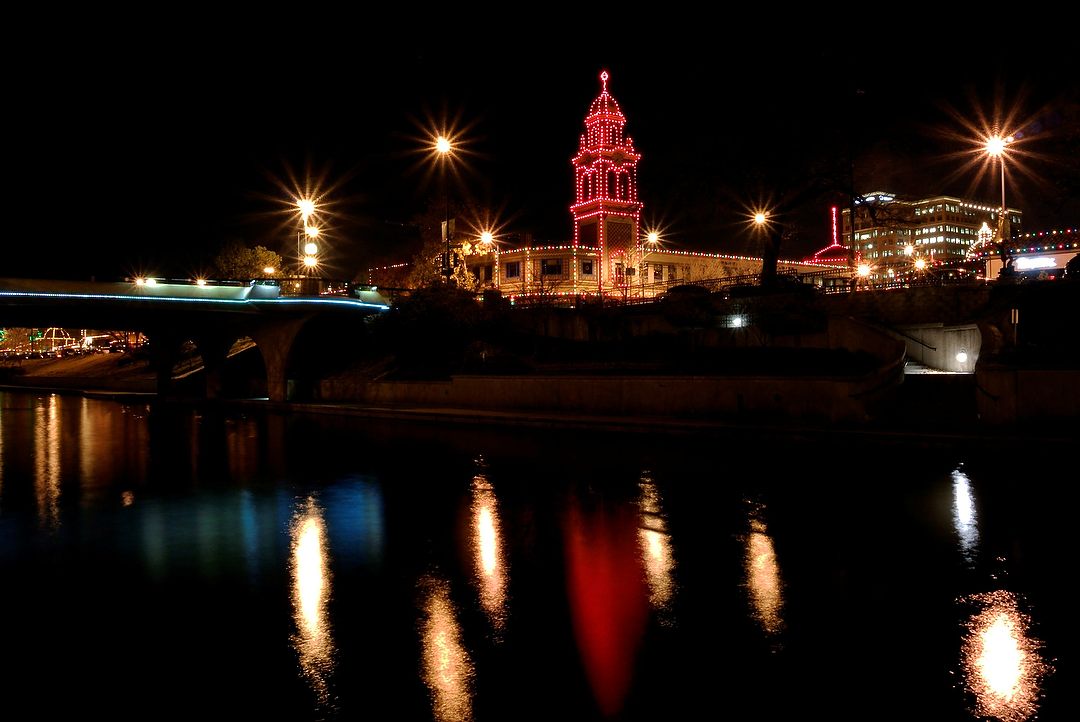
Small light sources at night are always a good opportunity to create “starbursts.” To do that, use a small aperture, and that means you’ll likely need to be on a tripod as well. Nikon One J1, Manual exposure, Incandescent white balance, ISO 100, 25-seconds at f/16, 10-30mm lens at 10mm.
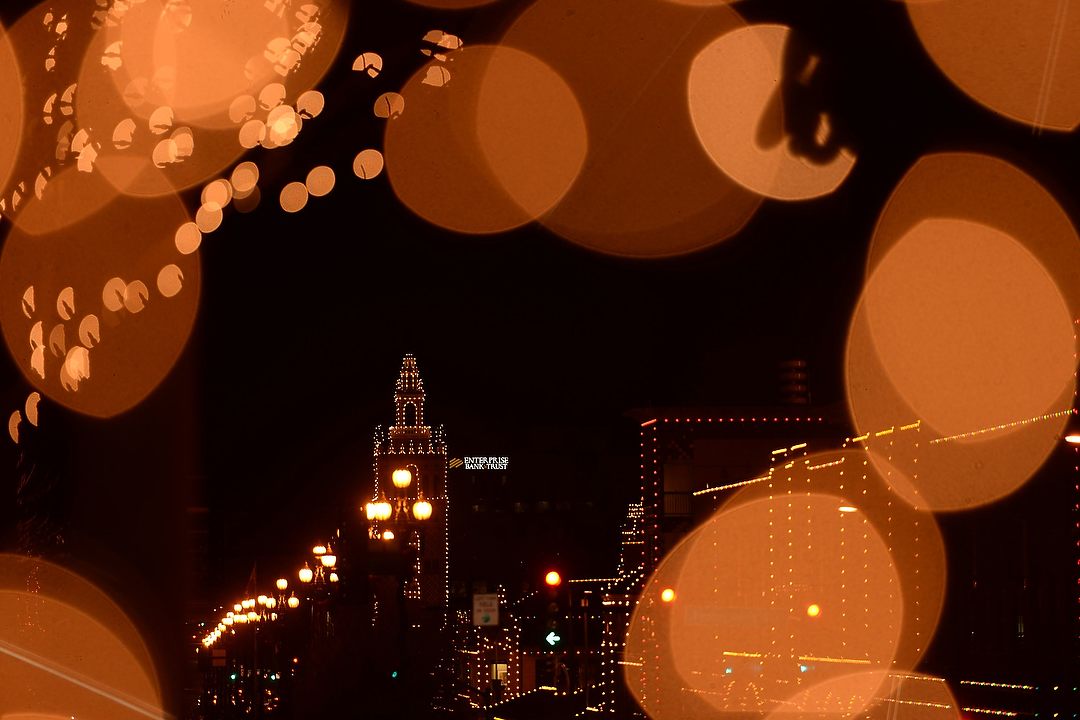
Wide apertures (in this case f/2.8) can also be used to create a neat effect. All you need to do is frame the scene so that you’re shooing through some lights close by in the foreground. Those little lights (tiny ones strung on a tree in this case) can create some big bokeh. And you don’t need a tripod for this one. Nikon D610, Sunny white balance, ISO 400, 1/80 at f/2.8, EV 0.0, Nikkor 70-200mm lens at 200mm.
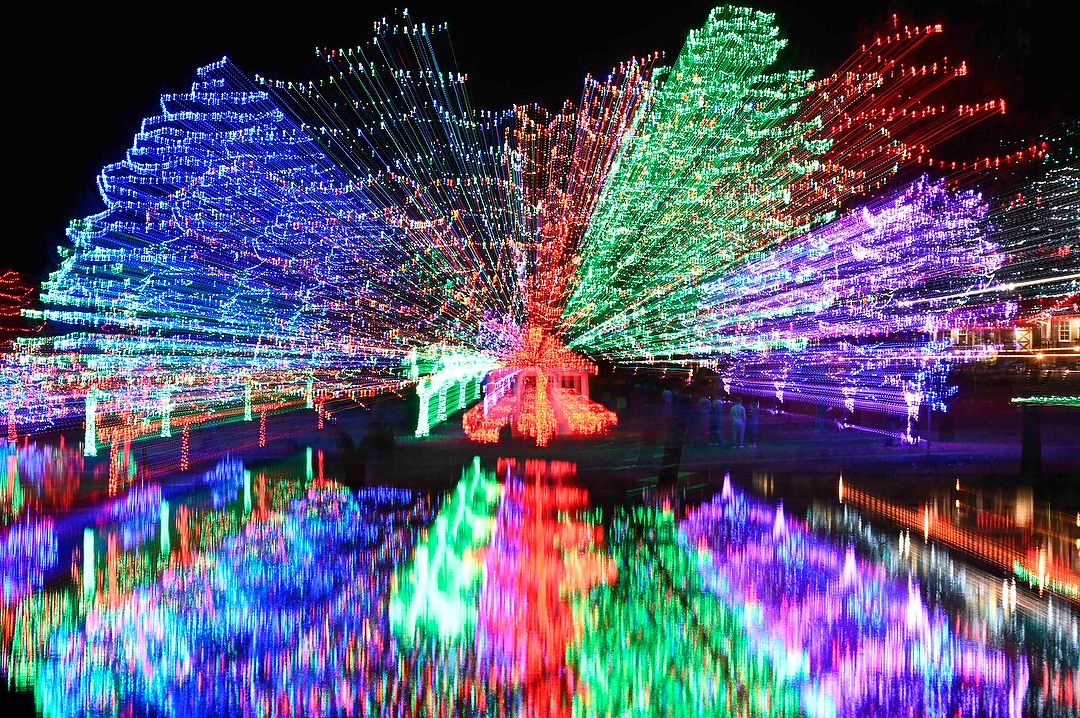
Zooming during a long exposure is another way to add some pizzazz to holiday lights. I like to start tight and wait a couple of seconds before starting to zoom out. On this photo, I also added a little jiggle to make the effect more pronounced. The classic way to do this is on a tripod, but you should also experiment off the tripod. You might like those even better! Nikon Z 7, Manual exposure, Auto white balance, ISO 200, 5-seconds at f/6.3 Matrix metering, -0.3 EV, Nikkor NIKKOR Z 24-70mm f/4 S lens at 35mm.
(If you like this story, please share it with your friends and let them know about the links on photography that I post on my business Facebook page. I’m also on Instagram and Twitter, @reedhoffmann. And if you’re curious about the workshops I teach, you can find them here.)

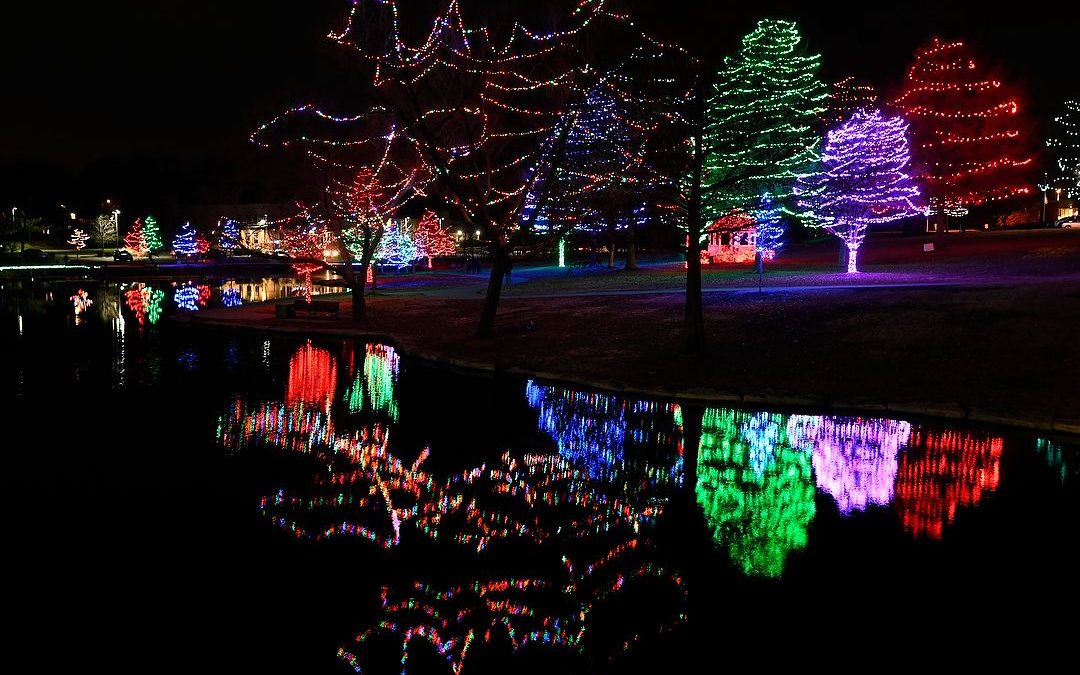
wow